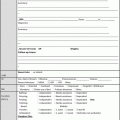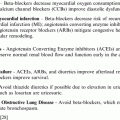© Springer International Publishing Switzerland 2016
Pamela A. Fenstemacher and Peter Winn (eds.)Post-Acute and Long-Term MedicineCurrent Clinical Practice10.1007/978-3-319-16979-8_4Department of Veteran Affairs Options for LTC
(1)
Department of Palliative Care, Corporal Michael J. Crescenz VA Medical Center, 3900 Woodland Avenue, Philadelphia, PA 19104, USA
Keywords
Aide and attendanceCommunity-based careCommunity Living Center (CLC)Department of Veterans Affairs (VA)End-of-life careHospital in homeHome-based primary care (HBPC)Hospice and palliative careTelehealthIntroduction
The Department of Veterans Affairs (VA) has developed many options for long-term care that include traditional institutional care as well as innovative programs for community-based long-term and post-acute care. Not unlike The Center for Medicare and Medicaid Services, the VA is also focused on the provision of cost-effective care through community based services aimed at reducing hospitalizations and preventing long-term institutionalization. Services that the VA offers to community dwelling veterans include: Hospital in Home, Home Based Primary Care, Telehealth, and Aide and Attendance. End-of-life care is also available to veterans with eligibility based on clinical need. Veterans can receive nursing facility (NF) care, either at a community NF or at a community living center (CLC) if they meet service-connected status, level of disability, and income requirements.
Community-Based Care
Hospital in Home
The VA was one of the original participants in the Hospital at Home demonstration, pioneering the innovation of discharging patients from inpatient units and completing their treatment at home [1]. This model was called Program at Home. Hospital in Home is the VA’s version of Hospital at Home and is currently operational at five VA Medical Centers. With Hospital in Home, veterans can receive hospital-level services including parenteral infusion therapy and occasionally external ventilation. While on service they receive daily visits from a medical provider and skilled nursing. Other services can include physical therapy and aides. In this program patients can be transferred directly from the Emergency Department to home instead of being admitted to the hospital.
Most programs are staffed by VA employees. The VA provides the medical care and DME such as oxygen, while a partner home health agency/infusion pharmacy provides the skilled nursing and infusion services. The most common conditions treated by Hospital in Home are CHF, COPD, cellulitis, and pneumonia. In most programs over half of patients have CHF. Evaluations of the program have shown improved outcomes as well as a cost savings of 30–60 % for a comparative index hospitalization. Hospital in Home has lower readmission rates, and substantially lower hospital-associated adverse events such as falls, delirium, and catheter-related infections when compared to a traditional inpatient hospital stay.
Stay updated, free articles. Join our Telegram channel

Full access? Get Clinical Tree





